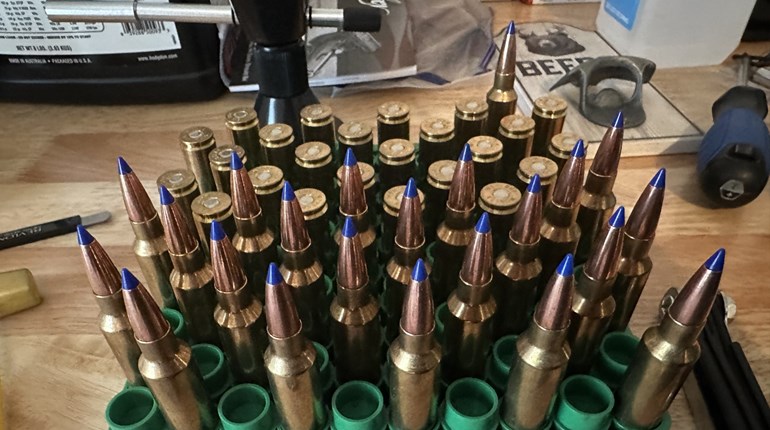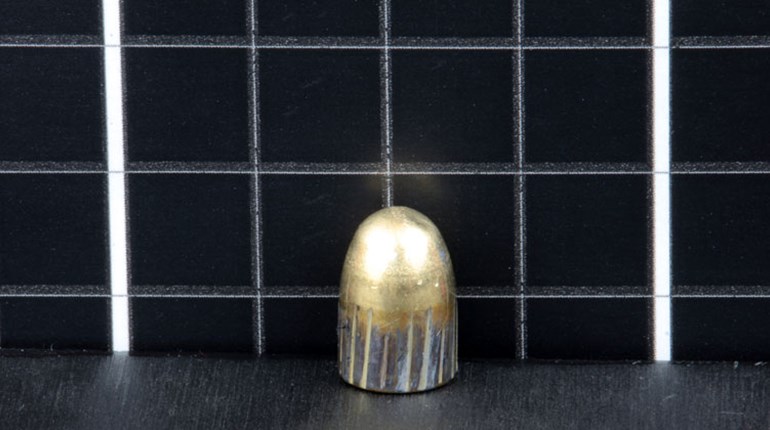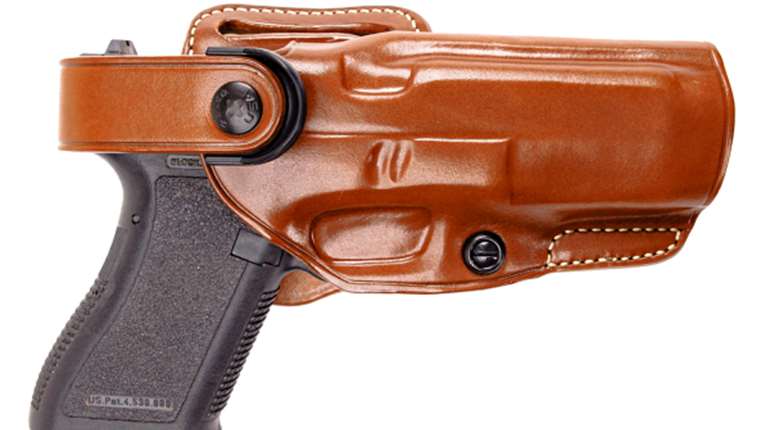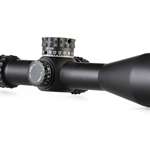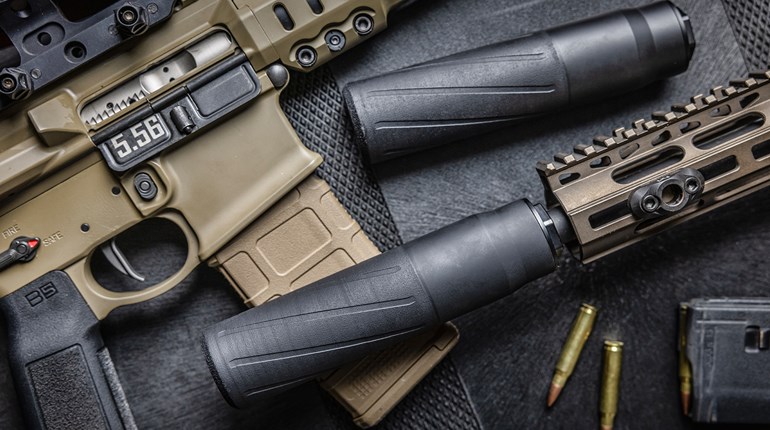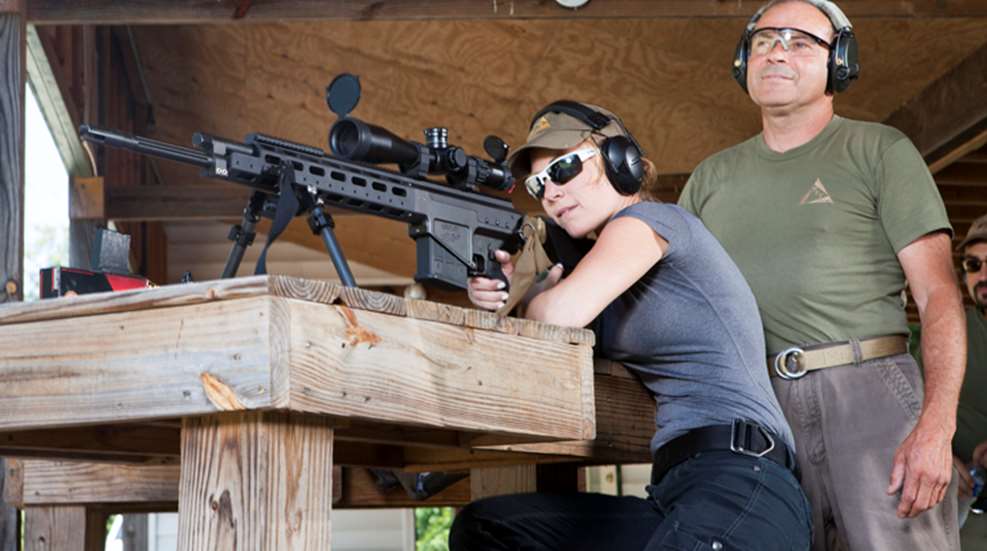
I could ring steel with the Alexander Arms Ulfberht for days and never grow tired of the sound or weary from the recoil. I would, however, go broke.
I began my afternoon test and evaluation at Practical Firearms Training, nestled in the mountains of Alderson, WV. After I ensured the impressive Steiner Military 5-25x56mm scope was level and secure, I began the meticulous task of sight in from a bench at one hundred yards. I chronographed the Ulfberht using Black Hills .338 Lapua Magnum 250-grain Sierra MatchKing.
My first shot went left, and each subsequent round walked right, and then back to center. I freely admit my sincere disappointment. I expected to shoot one ragged hole at 100 yards. We simply apply basic shooting fundamentals and a little math, right? I reconfirmed the Steiner was secure, took out the bolt and provided generous lubrication.
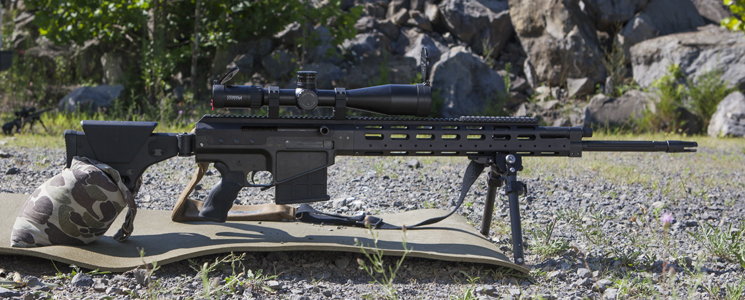
Maybe it was just the cold, clean bore phenomena? Now the Ulfberht was warmed up and a little dirty, I shot another group that produced the exact same results—perfect elevation with horizontal stringing. Was the magazine the cause? I tried once more. This time each round was hand-fed and still delivered the same results; each round danced around one MOA.
I decided to change locations. I ascended the treacherously steep, tree-covered mountain. The 25.4 pound rifle (including scope, rings, bipod and sling) marked time with my step. Meanwhile, the weight of the ammo stowed in my pack slouched my shoulders closer to the ground. OK, not really; I drove, but I find the imagery amusing. So there I was on Snow Flake Mountain, roughly 1,900 feet above sea level, accompanied by a slight breeze while the sun drew sweat from every pore of my body. Downrange a single 6-inch steel plates were positioned at 300, 400 and 500 yards, and 18-inch plates at 600, 700 and 800 yards. I made the appropriate adjustments to the Steiner and set up prone on the 400-yard plate. My best spotter at my six, interpreted the wind downrange and gave me hold orders. “Hold center.” Mike. “Hold center, three o’clock.” Mike. Okay, now I am aggravated. Is mirage the problem? I reduced magnification on the Steiner and adjusted the focus. The white steel appeared small but clean. The next group mockingly pranced all around that darn 6-inch plate.
Is the bullet not stabilizing? I made the appropriate scope adjustments and aimed in on the 800-yard steel plate. “Hold center, one mil, nine o’clock.” “Hit” followed three seconds later by a faint clang. Success! And they lived happily ever after, and rang steel until they ran out of ammo.
Lessons Learned
Stabilization of the bullet is impacted by three primary components: gravity, drag and wind. (Particularly, for long—range shooting, there are other environmental factors that include hang time, vertical angles, air density and the Coriolis effect, to name a few. However, I was not shooting far enough for those to be major factors.)
Gravity & Wind: We all know the trajectory of a bullet is a parabola. A review of ballistic data for the .338 Lapua Mag. with a zero at 1,000 yards, revealed the flight path peaked over 80 inches at around 500 yards, and the bullet very sharply began to lose velocity. I can rule out gravity for my initial concern as the bullet’s elevation was perfectly predictable all day. Wind is another animal. My spotter is an experienced precision shooter equipped with a Kestrel gauge and we accounted for natural variables like wind and air density. As far as I am concerned, those influences were negligible the day I was at the range.
Drag / Spin Drift: We learned in NRA’s First Steps Pistol orientation that the rifling in a barrel imparts a spin on the bullet, much like a football, and induces stability in flight. What they neglect to mention (because it really is not relevant for pistol) is, more or less, rifling will change the RPM of the bullet and affect accuracy. But what is our bullet's RPM? The formula we apply is muzzle velocity x (12/twist rate in inches) x 60. We know our muzzle velocity because we used our handy-dandy chronograph: 2,943 fps. We know our Ulfberht has a 1:9.3-inch twist, six-groove deep Enfield-pattern rifling, so 2,943 x (12/9.3) x 60 = 227,845.16 RPM per 12 inches of barrel length. Therefore, the bullet is exiting the barrel at 227,845 RPM. These results reconcile with recommendations by Black Hills.
The .338 Lapua Mag. was designed specifically for snipers firing rounds at 1,000 yards and greater. Coincidentally, so was the Ulfberht. The bullet is traveling at such a high rate of speed that, for a moment, it is moving side to side in a conical pattern just before stabilizing, or yawing. The only explanation for the spread I was getting at 400 yards and closer was the yawing of the bullet as it settled in flight toward the target.
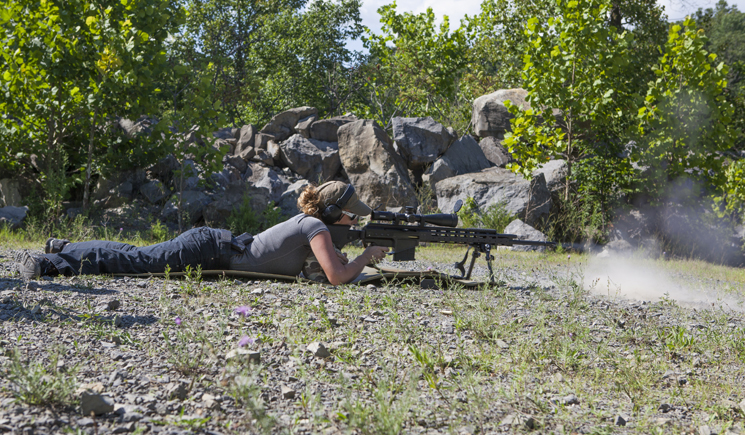
Functionality
If you mated an AR15 with a DP-28, the union would produce Bill Alexander’s brainchild named Ulfberht. In other words, the functions are familiar. The double-stack magazine is easily seated without lifting the rifle. The ambidextrous magazine release, while stiff, is inclusive to the often neglected southpaws. The oversize bolt moves simply and easily without disturbing the shooter's position or the position of the gun. The bolt carrier group is easy to disassemble for cleaning without the use of tools. The Geissele trigger is perfectly positioned, requiring approximately 4-1/2 pounds of pressure, with a short, smooth take-up and a clean, crisp break.
Recoil
Before my adventure with the Ulfberht, everyone I spoke with claimed the recoil was insignificant. I was unconvinced such claims could not be attributed to mere male bravado. That is, until I fired my first shot. Alexander cleverly combined the heavy weight and bolt group of the DP-28 with a 16.5-inch operating rod, which successfully reduced recoil so significantly that I felt less abuse than I would with a traditional .308 Win. rifle. As a result, I was pleasantly granted enough time to get back on target and watch the plate waving “hello” before I heard confirmation of the hit.
Final Thoughts
If you aim for a one-hole group at 400 yards and closer (with the Ulfberht & Black Hills .338 Lapua Mag. combination), your efforts will be futile as the bullet has not yet stabilized. If you expect a one-hole group at 800 yards and out, you will be unsuccessful unless you shoot in a vacuum. That is life, though; it is all about managing expectations. If you desire a gratifying experience shooting a long-range precision rifle that is dependable, familiar and will not abuse your shoulder, then you want the Ulfberht. It is no wonder Alexander Arms’ Ulfberht is Shooting Illustrated’s 2015 “Rifle of the Year.”













